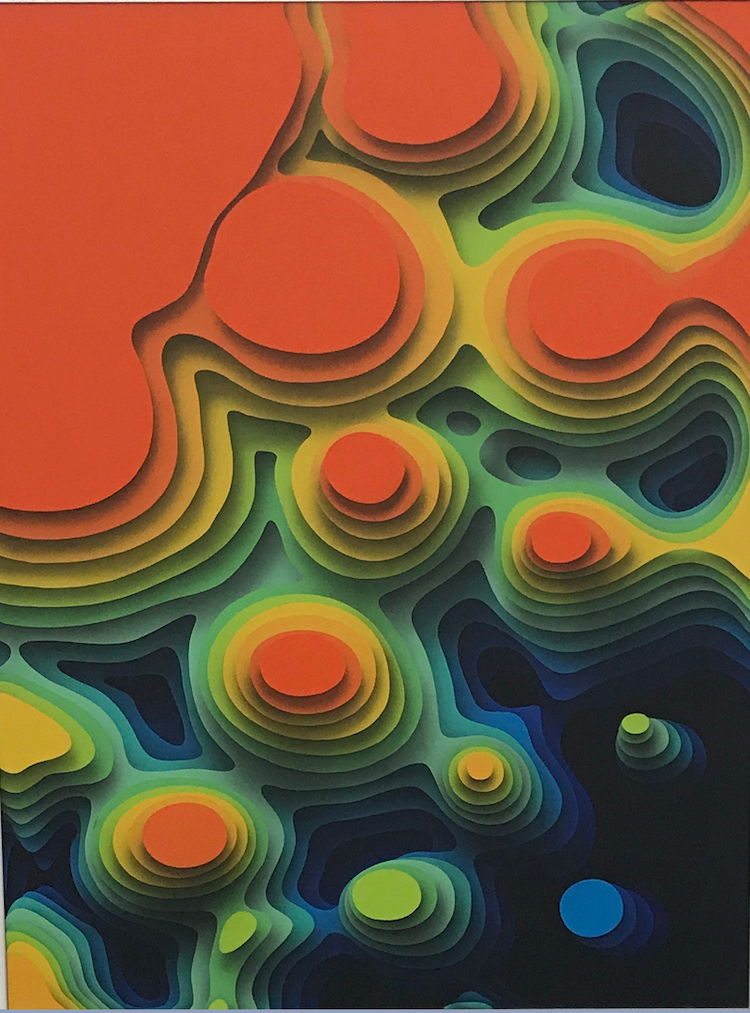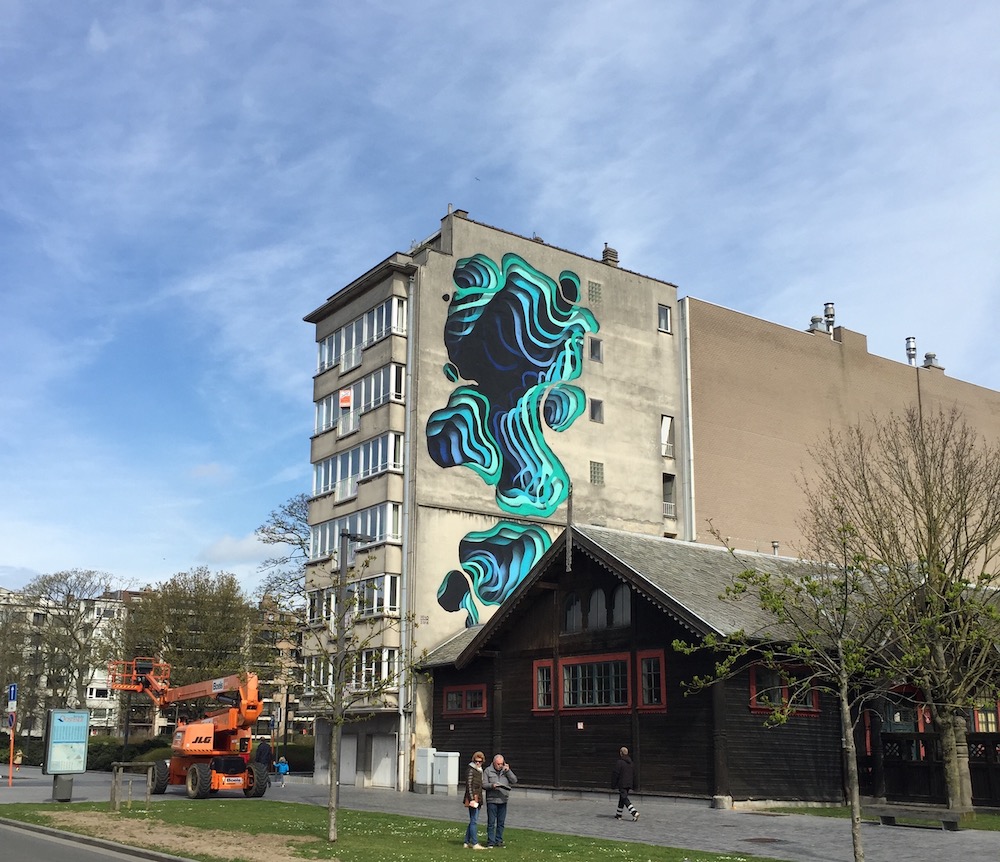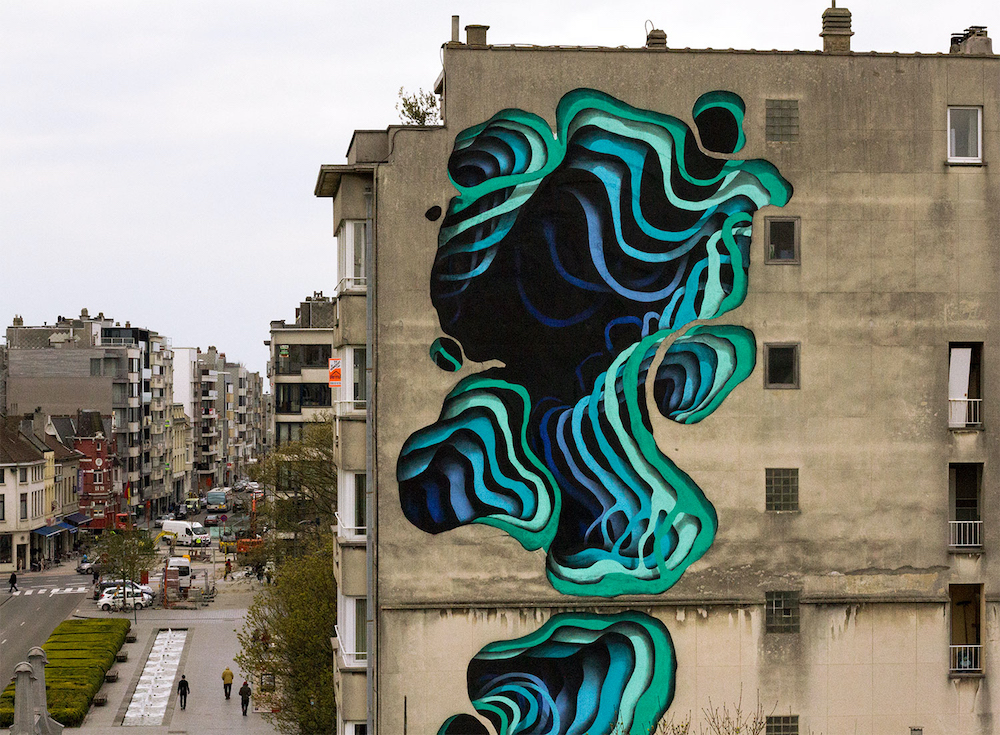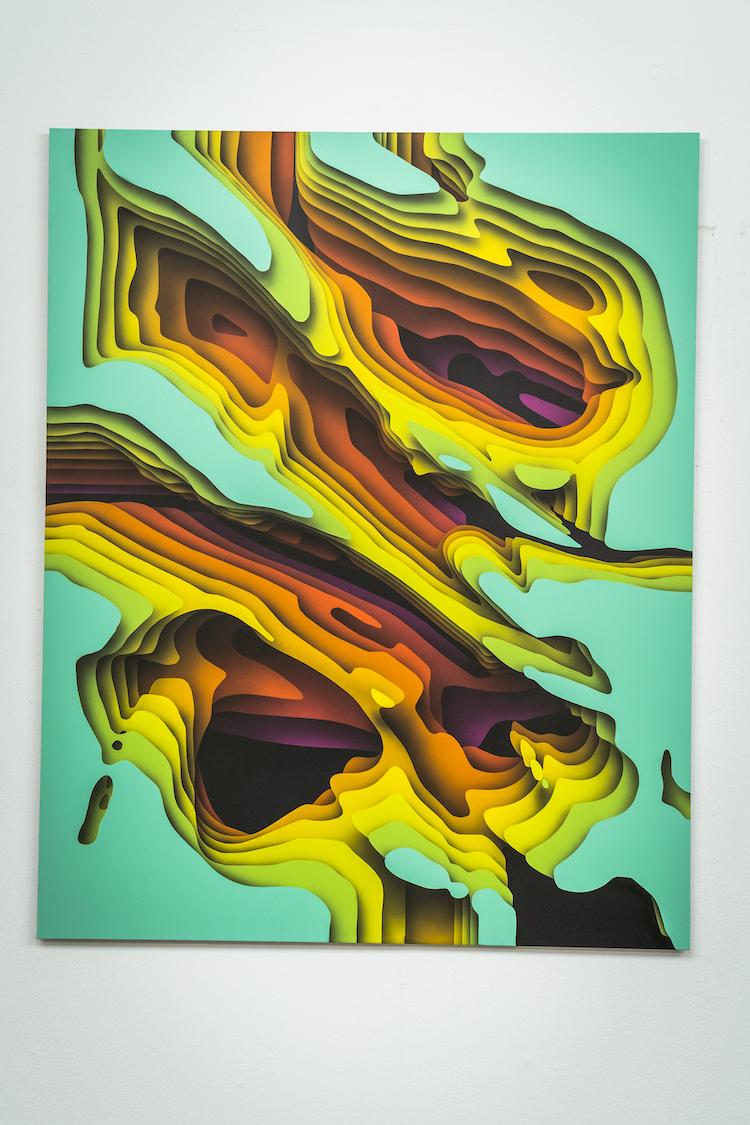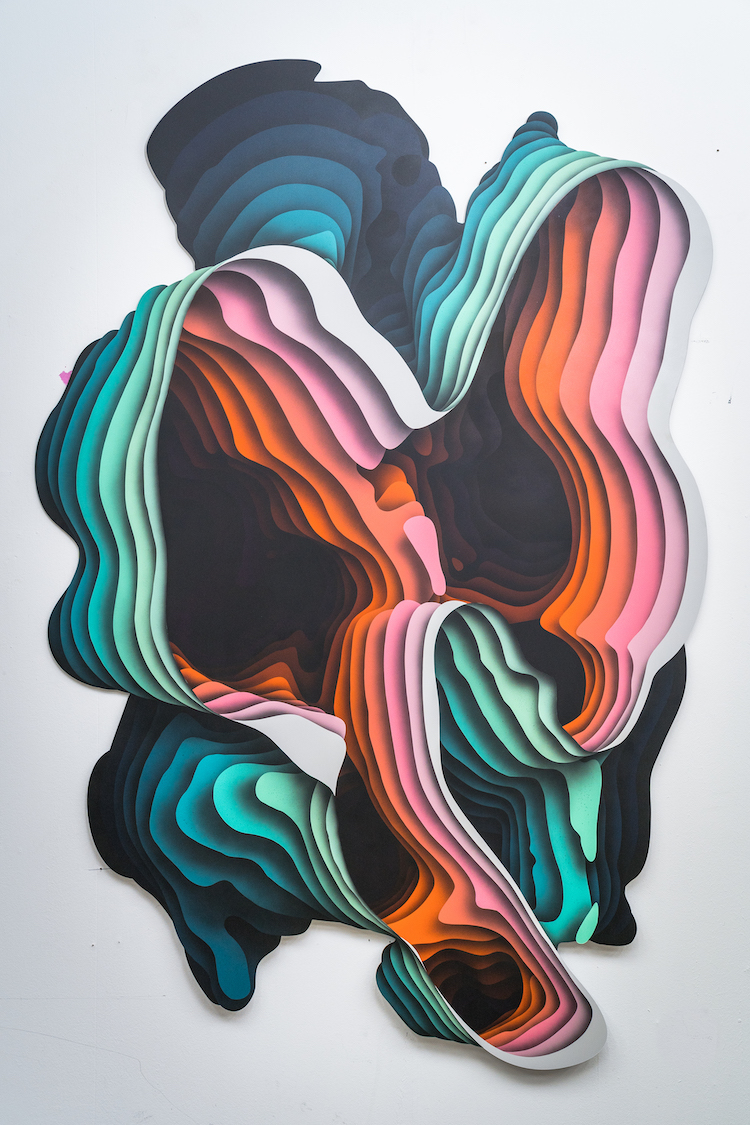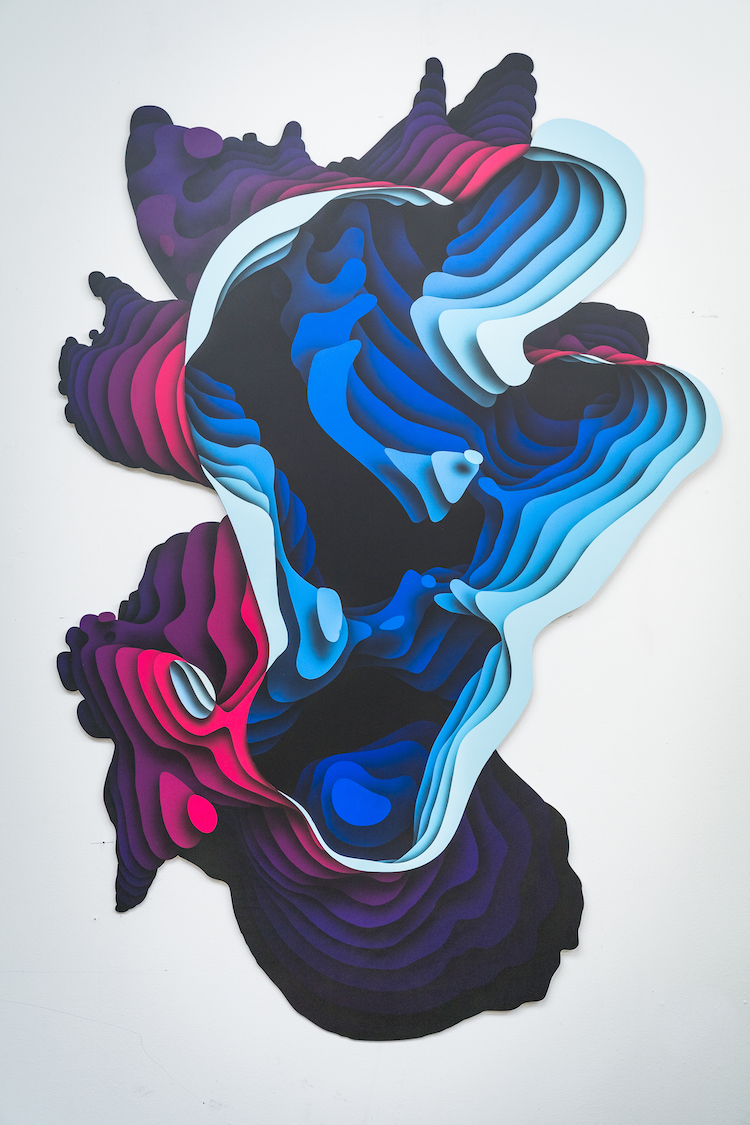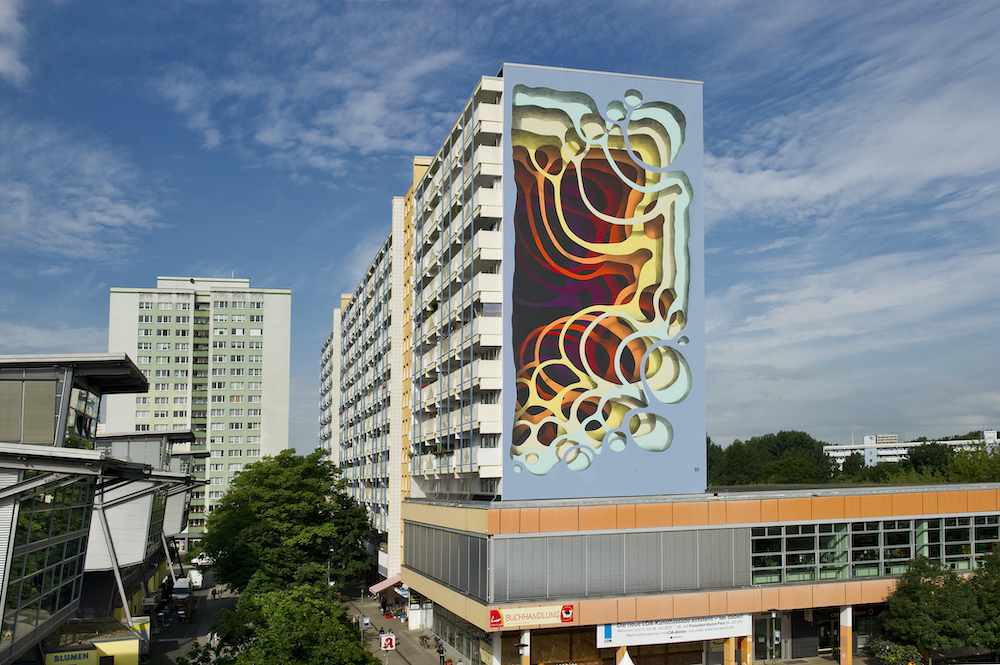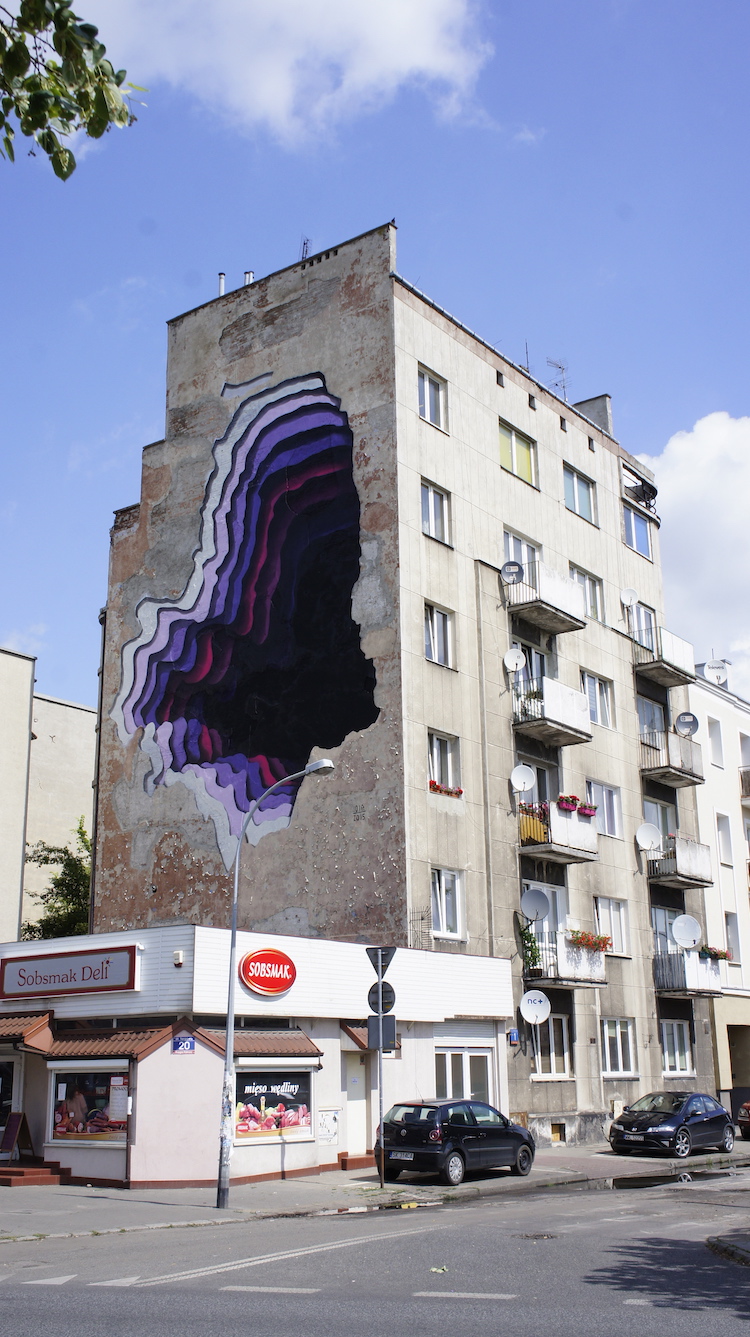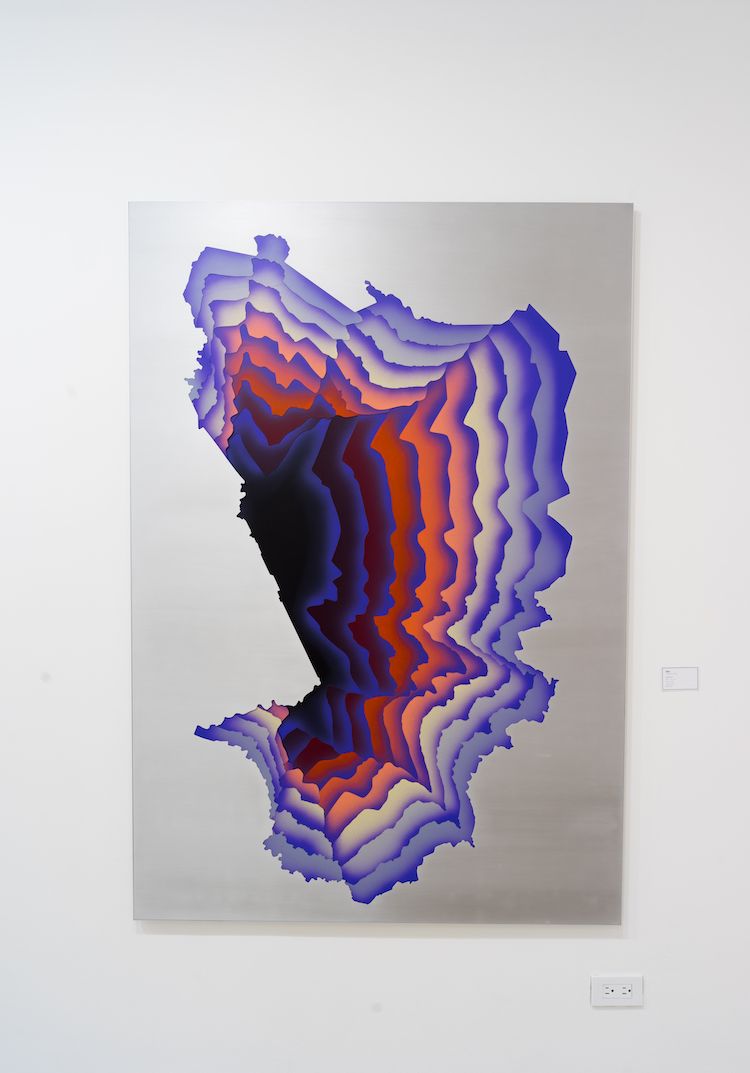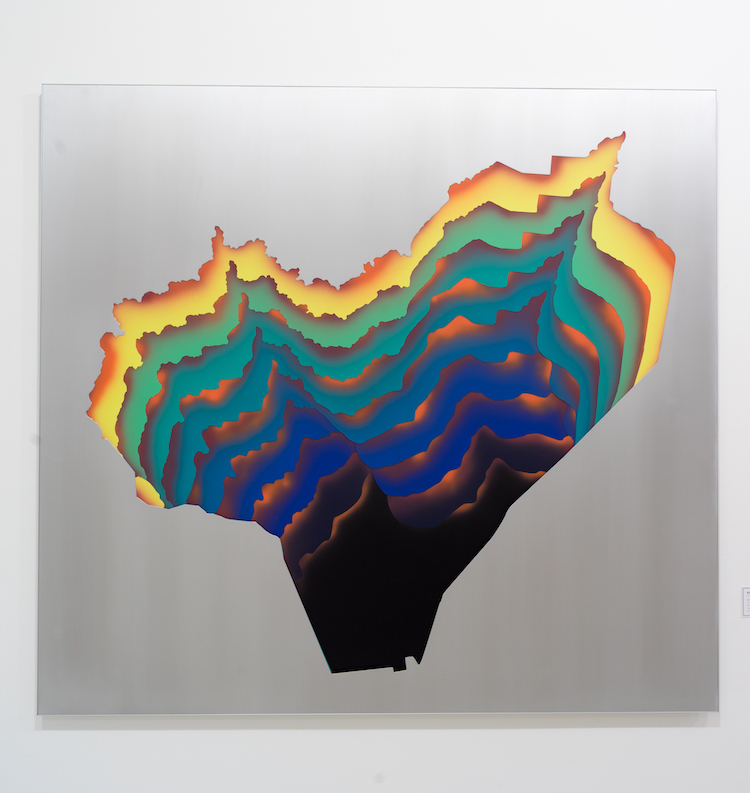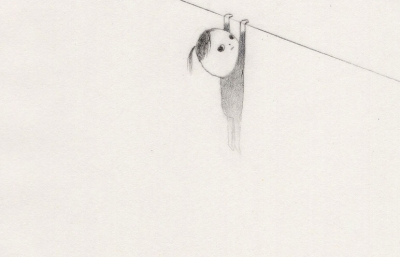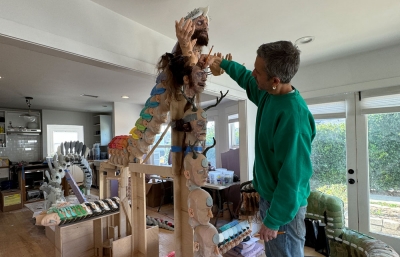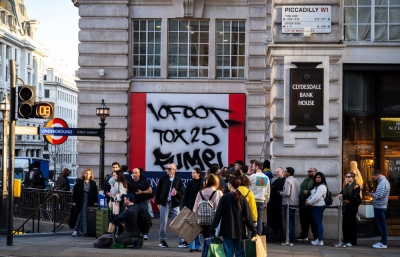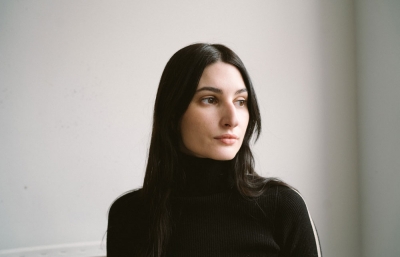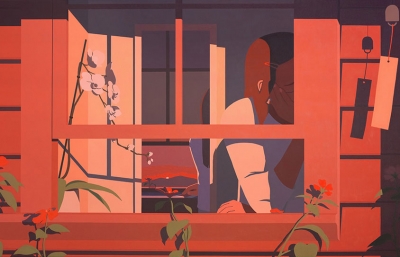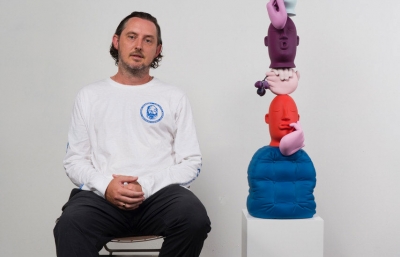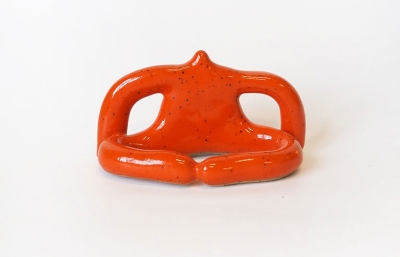Whether I had an unsettling premonition leading up to this interview with 1010, I still can't say, but in light of the massive global upheaval since, the series of works appear to be portals to someplace else, another dimension, time-travel, or just a new way to experience our collective reality. The artist, who works in abstraction, often in public spaces, has been developing a series that has taken on a new meaning. What does abstraction mean to us in a time when we are desperate for direct answers? How do we navigate a universe that is actively fighting back? What does democracy mean when laws are in limbo? As he was finishing a trip in Asia, 1010 spoke at length about these ideas, as well as the influence of Op art, referencing current events in his work, and how desire plays into his upcoming projects.
Evan Pricco: I know you are traveling in Asia at the moment. Is it a proper vacation or are you working as well?
1010: Nothing, I just try to switch off as far as possible and leave everything be for a while. Just let things happen without taking care. It feels healthy to me to just leave everything and disappear for a few weeks or a month.
How often do you get the chance to travel for pleasure outside of work? I ask this because there are so many opportunities to travel if you work in public art, but I know that can be a bit of a tough schedule because it’s back-to-back projects in different time zones.
This sounds a bit like a champagne problem to me. Most artists would consider themselves lucky if they get that many opportunities as you are describing them here. At the end, it’s simple: nobody says you have to say yes to every opportunity, especially when they lead to stress. You should decide most of what is happening to you or how you take it. You can get eaten up by a busy schedule, but you can also try and find your own pace and just do what you feel like doing. It might not come easy some days, but it’s sure doable. In my case, it really helped to skip most of the festivals.
Did you ever think, though, that you would have opportunities like this? When you were growing up in Poland, were you interested in public and outdoor art at all? We are around the same age, so I think you, like me, came up in a time where the proposition that you could make a living doing street art or graffiti was absurd.
Public art was not around in the rural areas of Masuria where I grew up in the 1980s. I remember some socialist mosaics, some reduced abstract paintings on Bauhaus-inspired architecture, and classic church interiors. Arts weren’t a big thing for me back then. I was more interested in Eastern European animation series like Pat & Mat, Bolek and Lolek, or The Fantastic Adventures of Family Mézga, and comics like Kajko and Kokosz or Romek Atomek.
My first contact with outdoor art came through graffiti some years after my family moved to Hamburg, Germany. I had to commute to school by the S-Bahn train in the early ’90s, and passed by graffiti along the line. That was also the time when German rap music started blossoming. Rap and graffiti back then were about having fun, friends, self-development, education and changing the world, or at least enriching the DIY culture. German rap, as far as I understood it, was mostly about building a community, shining lights on problems in society, fighting inequality and creating and finding meaning in life.
Thinking of it as a way to make a living wasn’t even on the radar for me. I actually did not know one single person back then who was making a dime with art at all. In the mid-’90s, I definitely did not imagine the movement evolving the way it did, but that was also a short time before the Internet and technology exploded.
For years, in both mural and studio work, you were so technically gifted at reimagining a wall or a canvas as an optical illusion, and the effect had this mesmerizing quality. When I see your work now, I'm starting to see more topographical patterns and influences, or maybe that’s so far off...
I’m a quite curious person, constantly filling my head with all kinds of topics and themes. I listen to all kinds of podcasts, lectures and interviews in my studio. Sometimes this leads to a concept for a body of work.
The Abyss series that you are referring to, for example, evolved after I spent months reading about big corporations, banks, money laundering and offshore tax havens. It surprised me how big this network is, and how much money gets extracted from democratic countries in that way alone. The Tax Justice Network is a group of journalists and lawyers who deal with this problem and provide a financial secrecy index, a list of the top 100 offshore tax havens. It’s a list of countries that have loopholes in their legal structure which, in one way or another, make it possible to skip paying taxes, moving money away from societies to secretive bank accounts. I remember that it shocked me a bit when I saw this number and compared it to how many countries actually are on this planet altogether. It’s almost half of them!
With that background, democracy really seemed like a big theater show joke to me for a while. I felt that I just had to work with this topic somehow and incorporate it in my art. Instead of explicitly talking about all the problems or trying to visualize the corrupt thievery network in a way, I decided to make something counterintuitive. Instead of trying to communicate this information, I tried to create something beautiful out of it and simply try not to talk about it while the series was in progress. The idea was to create something that makes it easy for people to look at, but leaves space for interpretation. I purposely tried to distract the viewer from what the picture actually referred to, and just played with the human lust to see beauty. I would use the shapes of the countries, states and islands that the list delivered, and transform them into optical illusions of depth. It was my intention to use matching color combinations and gradients to lure the viewers eye into the rabbit hole. Sensual pleasures over truth and reality.
Somehow, it was a good way for me to go. By working on this series, I learned so much about all kinds of other topics, other than the one that made me start this series. The process and the experiences I collected opened me up for more timeless topics I wanted to work on like beauty, perception, physics, psychology and desire.
I can imagine that Op art, perhaps, played a role in your aesthetic development, but who else influenced you?
That would be a long list! In my youth, it was, for sure, H.R. Giger, Hieronymus Bosch and tons of comics and computer games. Another World, for example. And, of course, the Op artists like Victor Vasarely, Jesus R. Soto, Carlos Cruz Diez, Bridget Riley, Richard Anuszkiewicz, but also artists like Joseph Beuys, Gerhard Richter, Eadweard Muybridge, Jenny Holzer, Martin Schöne and Mark Lombardi.
What made Op art interesting for me is the content, or the lack of it, somehow. What I mean is that these artworks show you how limited your ability is to sense things. It fascinates me that you just need some stripes and some repetition to directly visualize the limits of our eyes, one of the most important senses we build our world on. For me, it’s hilarious that we behave as if we would be sure and serious about everything around us, while all that’s needed to shake this up a bit is a canvas with repetitive black-and-white stripes. I enjoy the small things that disturb our reality, and thus, might remind us how delicate everything around us actually is.
You were in a show Shapes and Illusions in Paris, that was looking at new and emerging contemporary abstract work. I was really moved by some of the more Op art stuff you have been doing, the Fluss series, in particular. I feel like these processes must be so time-consuming to experiment with and develop, so I'm curious about your studio practice in Hamburg.
Artists and all creative people usually don’t have a problem at all with novelty. Most of them are creative and could invent new things all the time. That’s what usually gets them to do art in the first place. Let’s be realistic here: what slows the whole thing down is that you kind of have to take care of your artist image, the lovers and the customers and followers, if you want to make a living out of it. Ideas just come and pop up in your head. This happens instantly. What can be time-consuming is implementing them into the galleries and the market.
Just imagine Juxtapoz changing its main topic from arts to different sorts of potatoes for one issue, then to ice skating? And then to an extra exciting one, with interviews with Julian Assange and Edward Snowden talking about Epstein’s death. You could totally do that, and I would, for sure, subscribe, but you would most likely lose most of your readers and all of the galleries that pay for ads. It would definitely be risky to your business and all your employees. It almost seems a bit like we are all together caged in the same capitalist game and have to make money and pay for our bills or even loans. That definitely is one of the reasons which slows down some of the development in a lot of fields. It’s not easy to deal with, but it’s not completely negative. I started to enjoy that the pace of change is a bit slower than it was in my twenties. It’s nice that you can take your time to master something and explore things in depth.
What is the plan for your upcoming shows and projects?
The main theme I’m working with at the moment is the question of what is actually inside or behind the center of the thing we desire? What do we actually really want when we desire something? Why do we desire it at all, and what happens once you get it?
If you were to be able to walk through one of your portals, where would it take you?
Would it matter where it takes you, when by getting there, you would forget where you came from?

